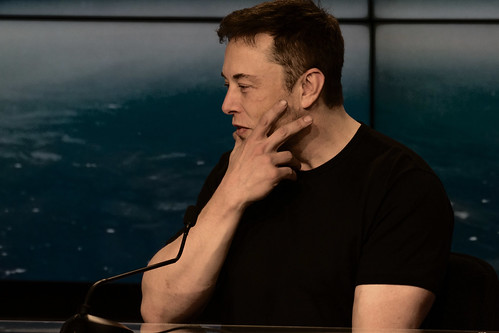Elon Musk is inserting brain chips into people – here’s what the tech can do
Elon #Elon

The idea of connecting our brains to computer systems is a staple of science-fiction films like The Matrix – but it could become a reality next year.
Elon Musk’s start-up Neuralink aims to install brain chips in up to 11 people in 2024, with thousands of volunteers having lined up to take part.
Research by Foresight Factory suggests that more than a third of consumers (35%) would be willing to have such a chip implanted, in order to connect directly to computer systems.
The US Food and Drug Administration (FDA) recently gave Neuralink approval to begin human trials, after initially refusing it.
Neuralink, which launched in 2016, is centred on creating devices that can be implanted in the human brain, and has already implanted chips successfully in mice, pigs and monkeys.
The startup is working on flexible threads, far thinner than human hair, designed to be implanted into the brain by a large robot to ‘read’ brain activity.
Read more: Elon Musk to start human trials with brain chip startup Neuralink
Musk has made various claims for what Neuralink may one day be able to do – from ‘telepathic’ communication to wearers being able to operate bionic limbs based on Tesla’s Optimus robot.
A report by one of Musk’s biographers, Ashlee Vance, recently described the procedure, with a surgeon removing a chunk of skull, before a robot weaves in electrodes and super-thin wires into the brain.
A separate unit sits behind the ear, with wires running directly into the wearer’s brain.
Musk reportedly urged the team to speed up progress in the wake of a breakthrough by rival Synchron, one of whose patients sent a message on X, formerly known as Twitter, using only his mind earlier this year.
What will happen in the first human trial?
The first trial will focus on people with quadriplegia due to cervical spinal cord injury or amyotrophic lateral sclerosis (ALS).
In the trial, Neuralink hopes to give people the ability to control a computer cursor or keyboard using their thoughts alone.
How does Neuralink work and what can it treat?
Neuralink’s device has a chip that processes and transmits neural signals from implants in the brain to a unit behind the ear – and from there to devices like computers and phones.
The company hopes that a person would potentially be able to control a mouse, keyboard or other computer functions such as text messaging with their thoughts.
Neuralink also believes its device will eventually be able to restore neural activity inside the body, allowing those with spinal cord injuries to move limbs.
The San Francisco and Austin-based firm also aspires to cure neurological conditions such as Alzheimer’s and dementia.
Is Neuralink unique?
Far from it. Not only are there direct rivals such as Synchron, but there are several other companies working on implants of various kinds.
BlackRock Neurotech’s Neuralace can be installed in human brains. (BlackRock Neurotech) (BlackRock Neurotech)
Writing in The Conversation, David Tuffley, senior lecturer in applied ethics and cyber security at Griffith University in Brisbane, Australia, said: “Neural implants have been helping people since the early 1960s when the first cochlear implant was placed in a person with impaired hearing. There has been much progress in the 60 years since then.”
An under-the-radar firm, Blackrock Neurotech (unrelated to the asset management firm) has implanted brain computer interfaces (BCIs) in dozens of patients over the past 19 years.
Their chips have helped paralysed patients create art to play Pong in the lab – and the company hopes to create a version for use in the home soon, with ambitions to create implants that could deal with deafness and blindness.
What has Elon Musk claimed the tech will be able to do?
In his typical style, Musk has said Neuralink could lead to a future in which man and machine merge – and has promised to install the tech in himself.
He has made similarly ambitious statements in the past about the technology, which some hope could treat Alzheimer’s and Parkinson’s, having said in 2019 that he would be testing on humans in 2020.
Replying to a question on X, Musk said that the technology could one day be used to stream music directly into users’ brains.
He added that the technology “would solve a lot of brain/spine injuries and is ultimately essential for AI symbiosis”.
Musk has previously said: “Over time I think we will probably see a closer merger of biological intelligence and digital intelligence.
“It’s mostly about the bandwidth, the speed of the connection between your brain and the digital version of yourself, particularly output.”